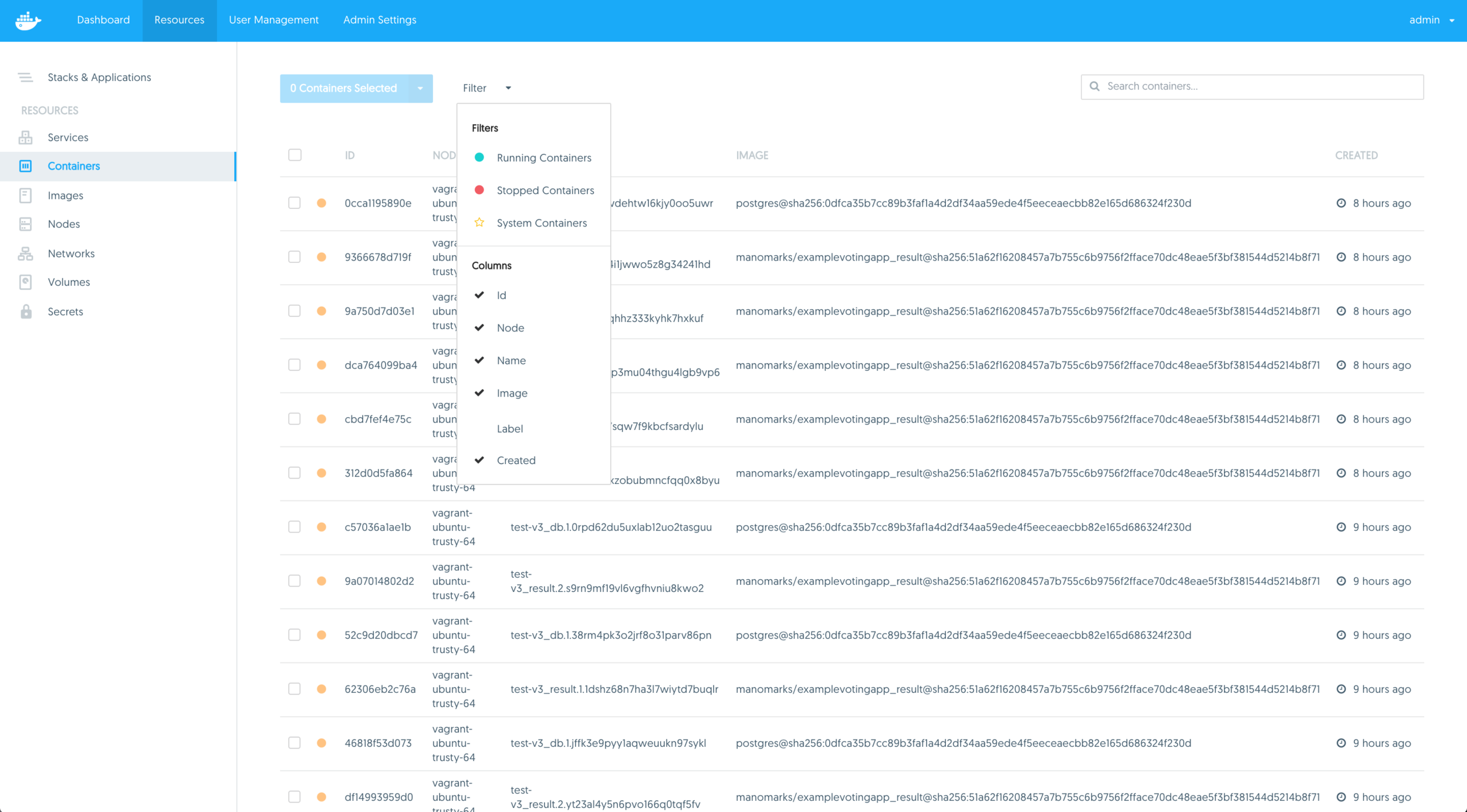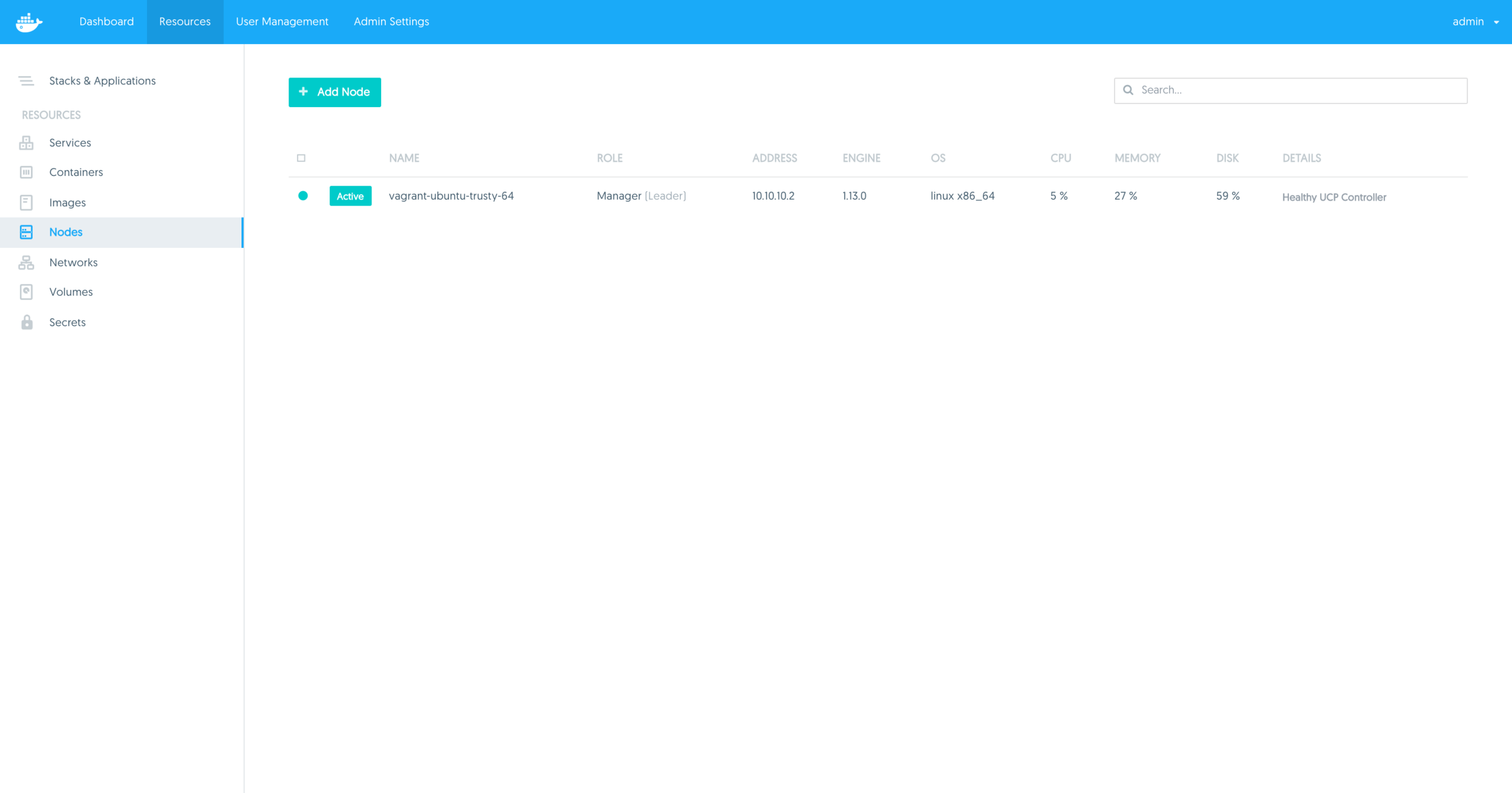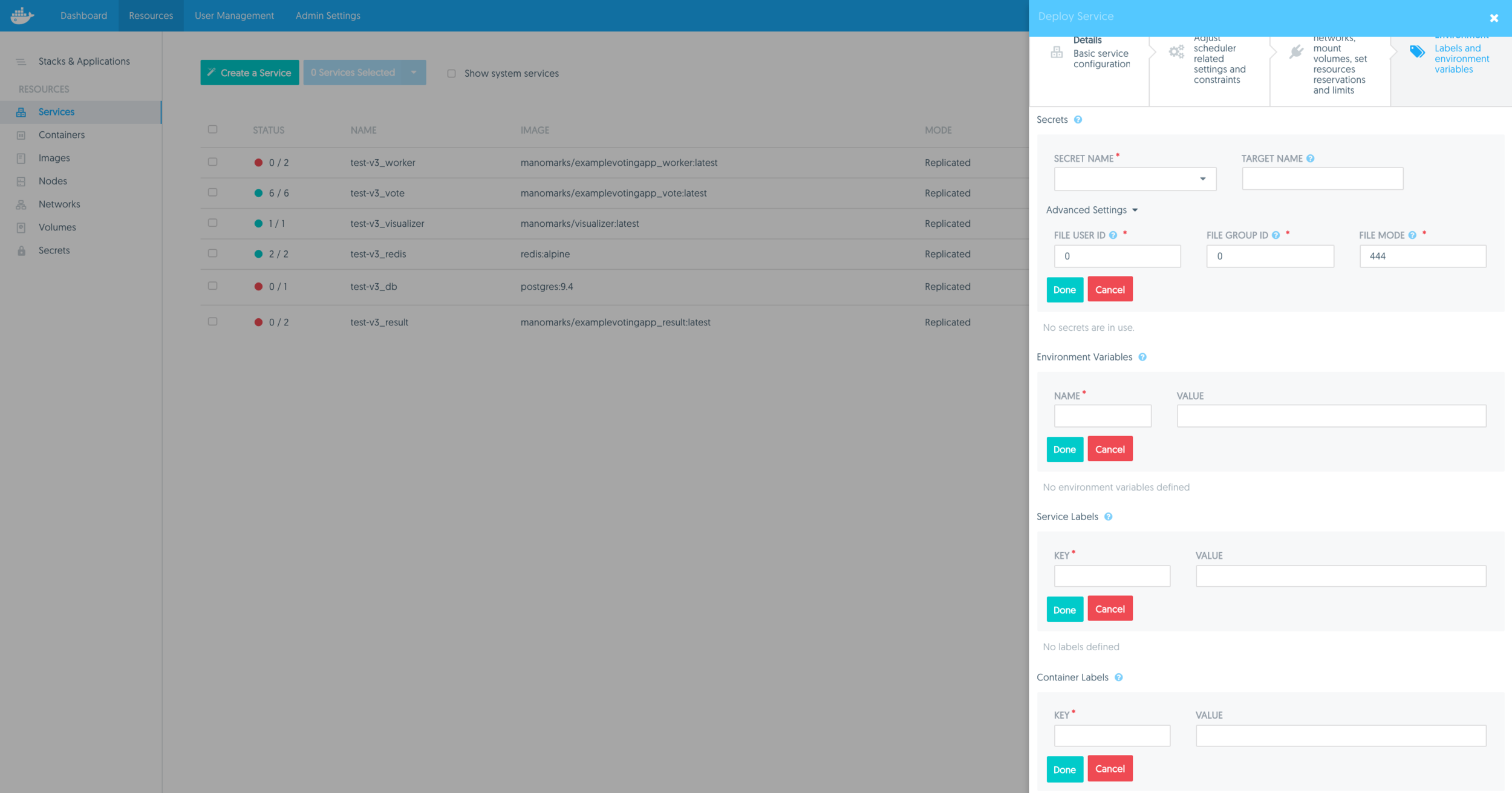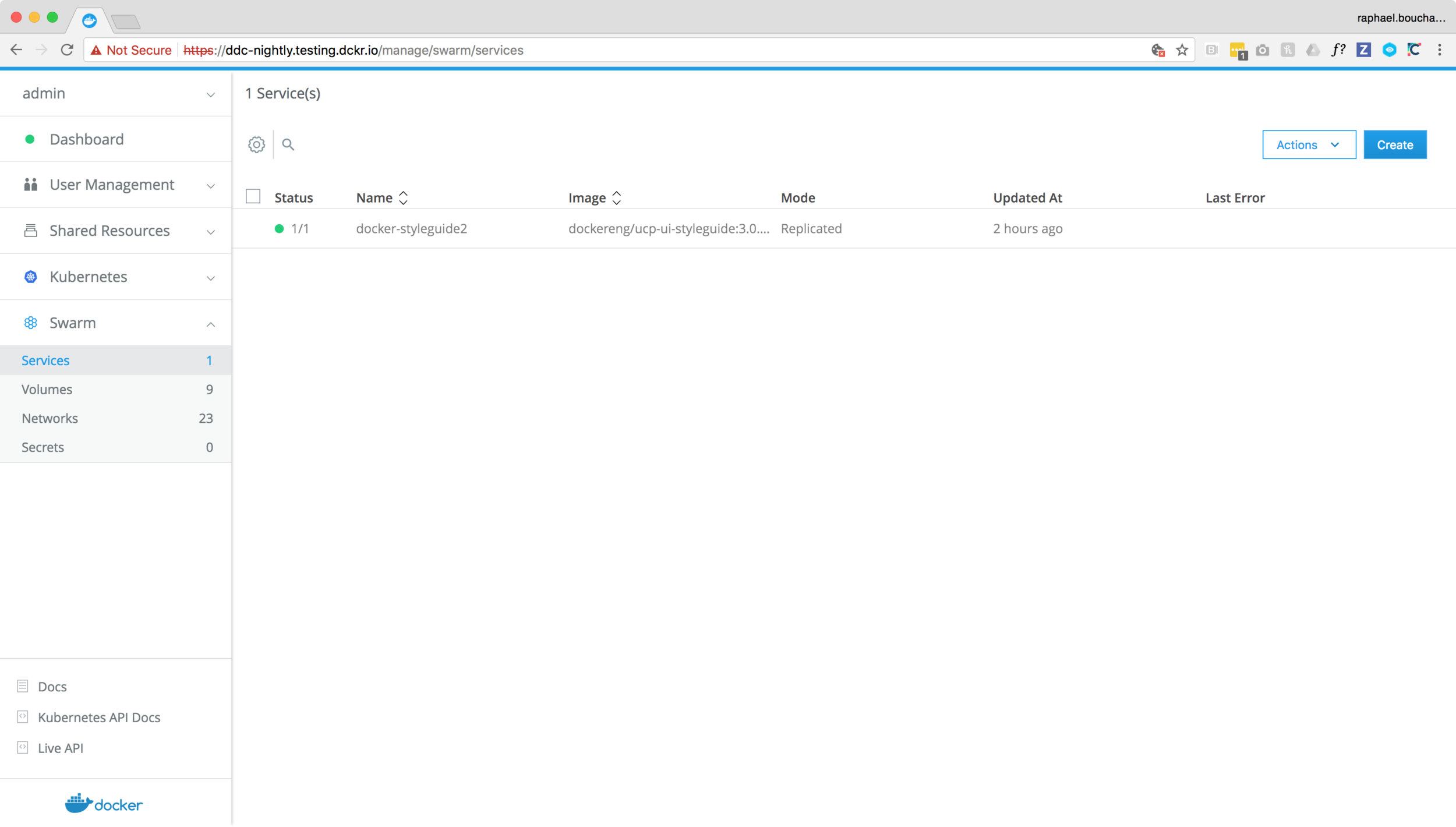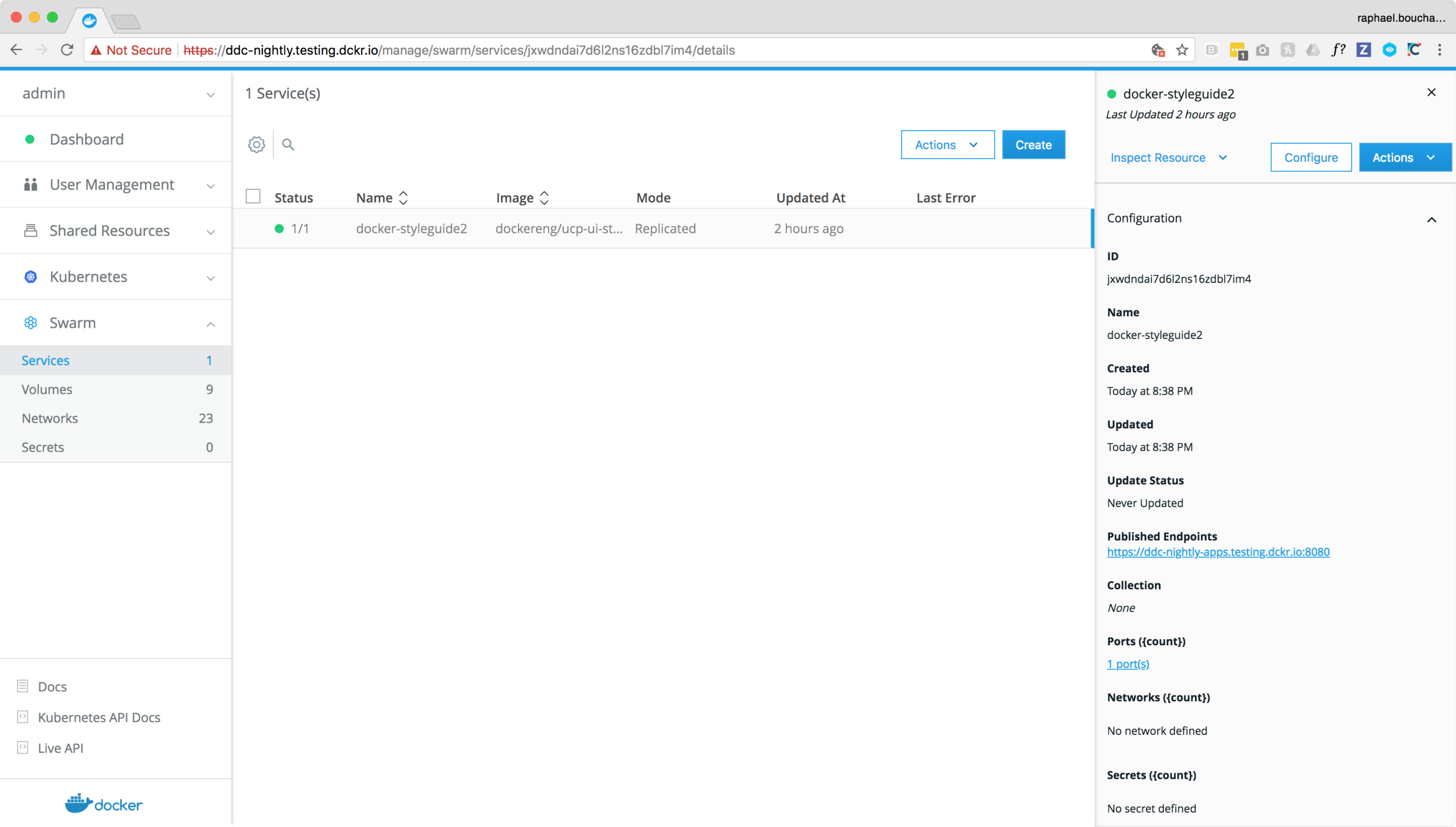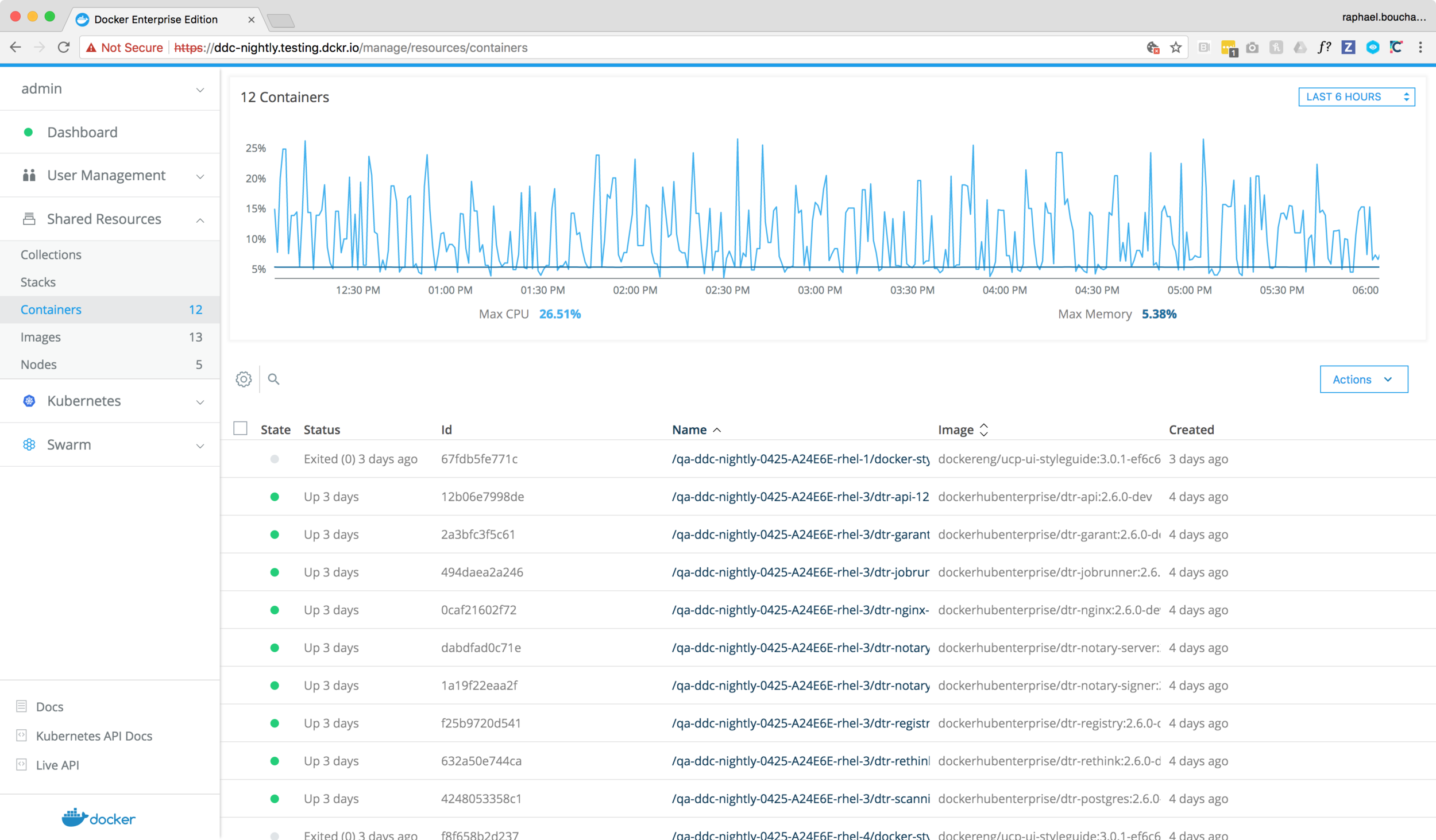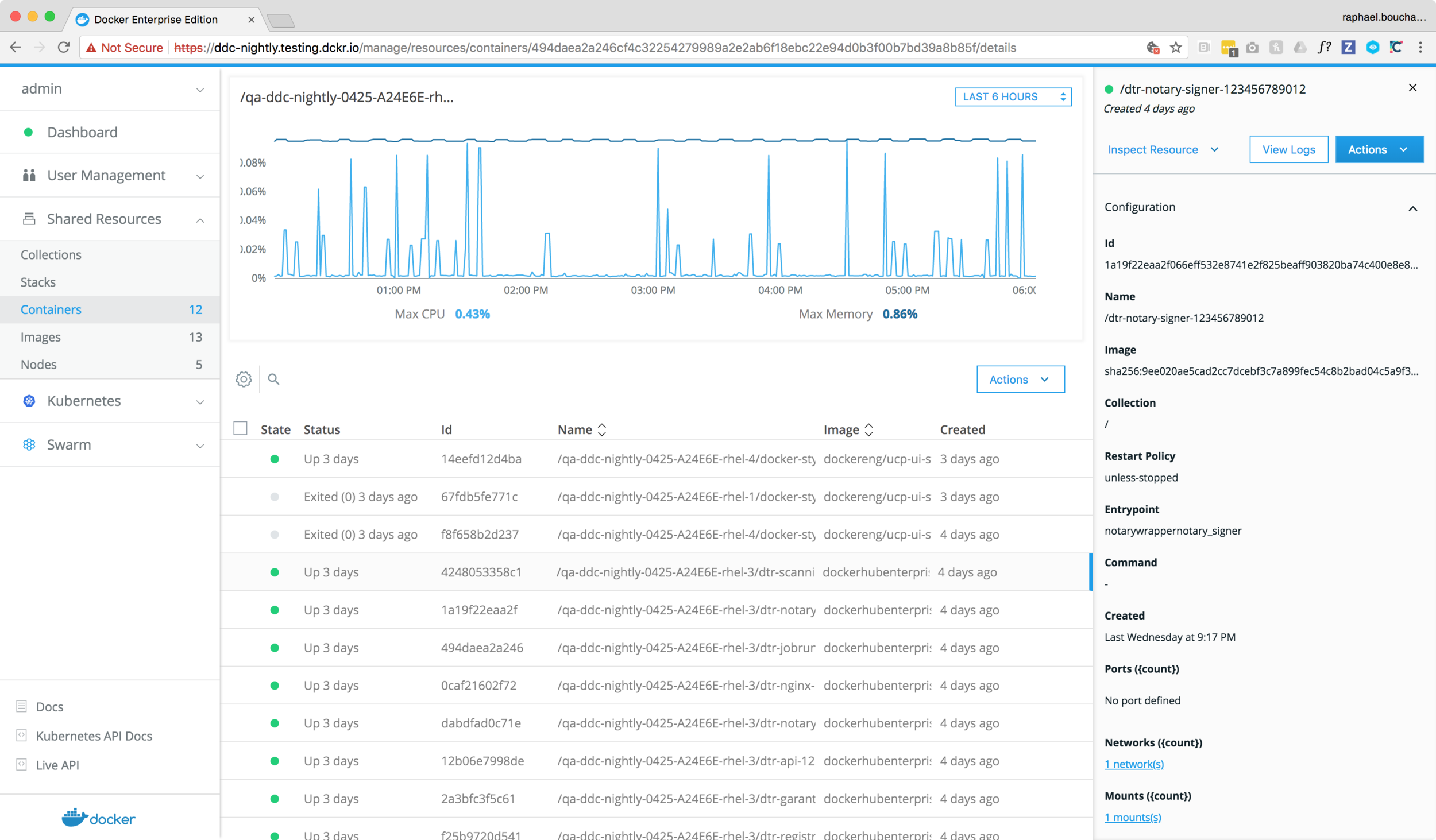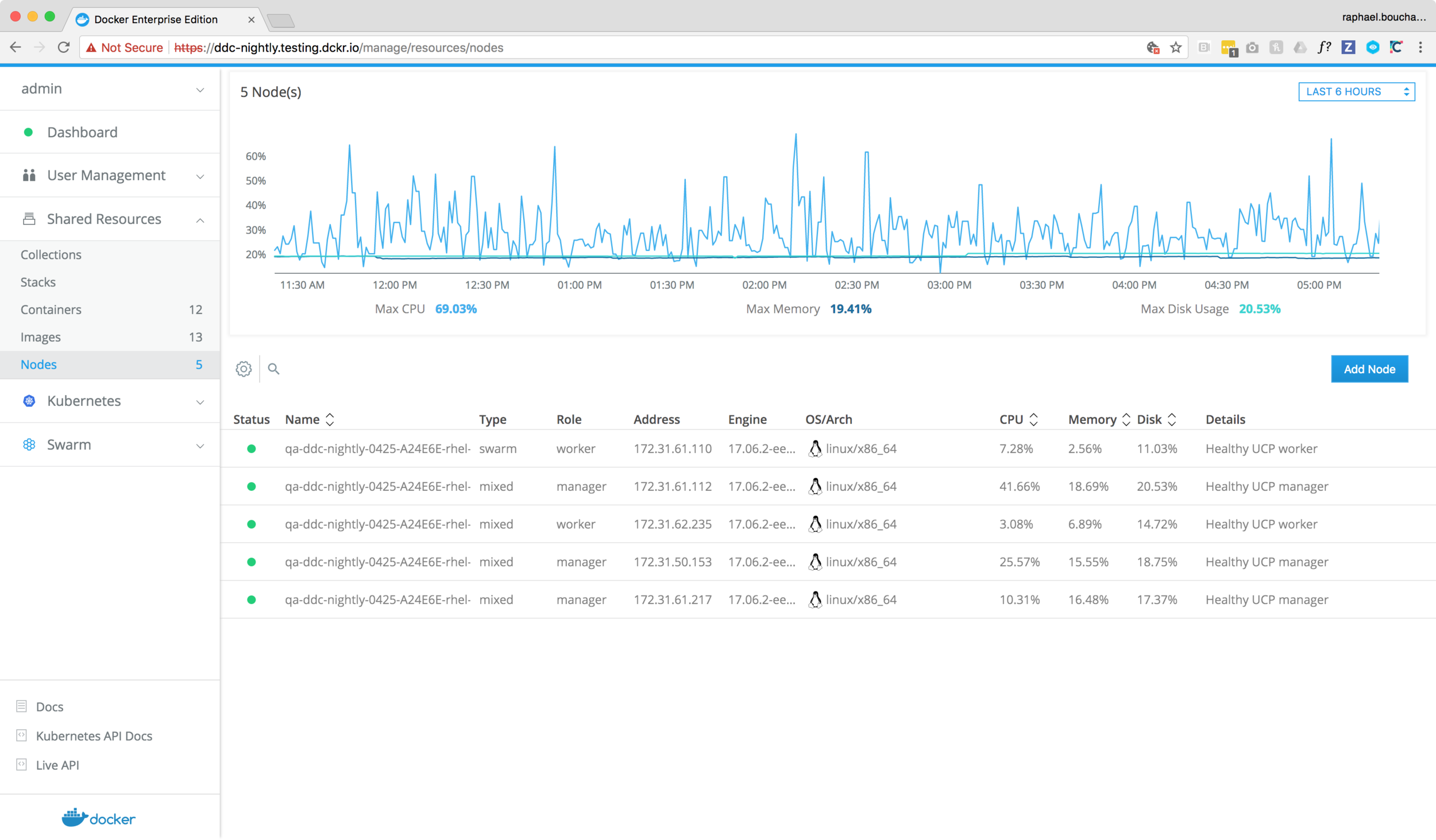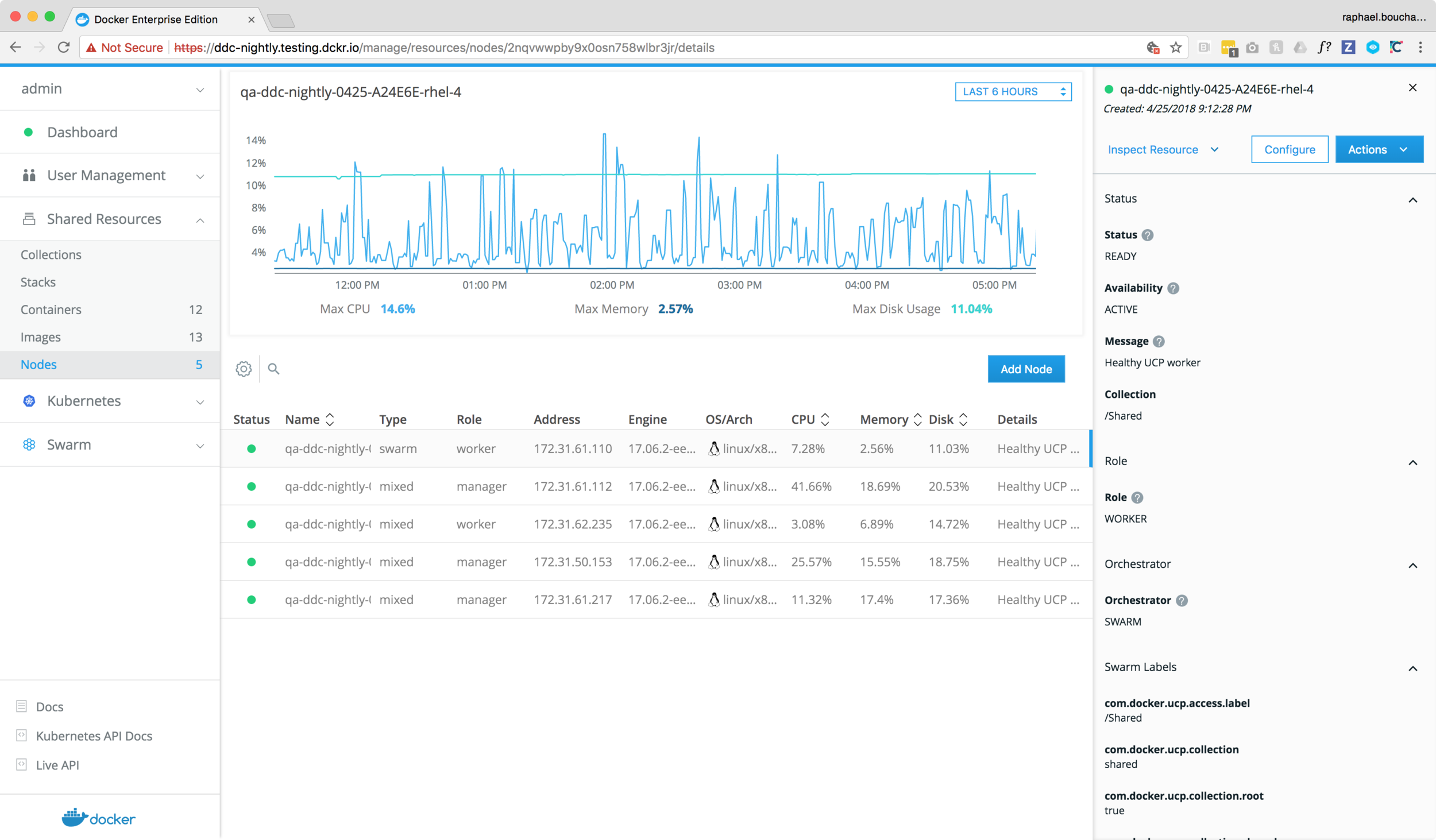Docker Universal Control Plane 2.2
First things first, what is Docker?
Docker helps other software development companies build, ship and run software. Docker is paving the way for software containerization and container platform management. Containers are packaged software with everything needed to run software in an secure, portable and scaleable unit. With containers software can be broken into micro services allowing pieces to be maintained, updated or even restored without taking down the rest of the application.
Thinking about a basic music streaming app, it could be containerized into micro services and databases, each piece could be containerized. The example below could be split into 8 micro services running multiple containers. These pieces can be isolated so that users or other software can only access to the music database but not the user database.
Containerized applications insure a secure software platform by only exposing certain ports(access to the container) and store encrypted data. With maintenance each piece can be worked on without taking down the entire app, or with a sudden surge, each container can be infinitely scaled to manage the demand.
What is orchestration?
Orchestration is the management layer for containerized applications. Applications can be managed in different layers; applications being the highest layer, with services, containers and task moving down the chain.
Introducing Docker Enterprise Edition
Docker EE is a platform that allows Developers, Applications Operators and Infrastructure Admins to manage their software lifecycle from building, through running and managing said software; completing the cyclical application lifecycle. Docker EE is split into two different experiences, each tailored for specific use cases, Docker Trusted Registry(DTR) being for the Developer, and Universal Control Plane(UCP) being for AppOps and InfraAdmin.
Universal Control Plane
Understanding and Updating the Navigation Model
Existing Navigation Model
UCP 2.1 had a very simple navigation model, with two main page layouts. Scalability was an issue with this model and blending details with inlines edits gave users anxiety as they were afraid they'd accidentally change something. As Docker expands its capabilities and functionality is was critical that scalability be taken into account. My creating a separate view for details and an edit view, the user's anxiety was reduced.
When the details of a resource were revealed, a large portion of the screen is greyed out, covered by the panel overlay and unusable. I found this to be cumbersome and poor use of space. When speaking to users they value information density and want to be able to move between resource easily. To fix this, I removed the overlaying panel and built focused interstitials for edit and create workflows.
Updated Navigation Model
This new model gave more room for the resource details, and form navigation while editing or creating a resource. Moving the edit and create workflows into a full page layout helps focus the user and isolate their workflow. With the navigation model in place it was time to explore the visual representation of the UI elements.
Universal Control Plane 3.0(React)
Visual Language(Beta)
While working UCP myself and a fellow designer created the first ever unified Docker Design Language Beta. We worked with our engineers to make a shared component library with React to decrease development time.
Dockers brand is colorful and vibrant. We carried this into the products subtly to not distract users from their tasks.
Applying the Visual Language
Using the same base we were able to apply a visual language to unify the visual presentation of UCP.
This consistency helped users understand where elements were and increased their confidence in the product.
Results
We asked users what they thought of the new product and positive sentiment increased by 15%. This is great but the work is not done!
What's next?
After every major release I do a heuristic review to make sure any design debt is documented and tracked. Here is a sample of the review.
This project is ongoing as we continue to make updates and integrations, stay tuned for more!


